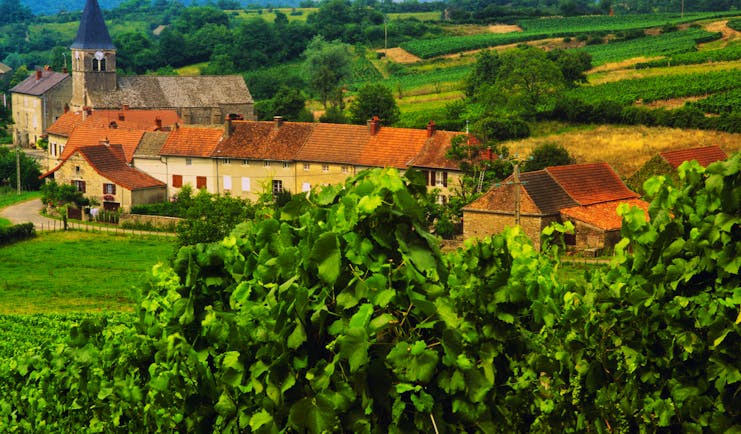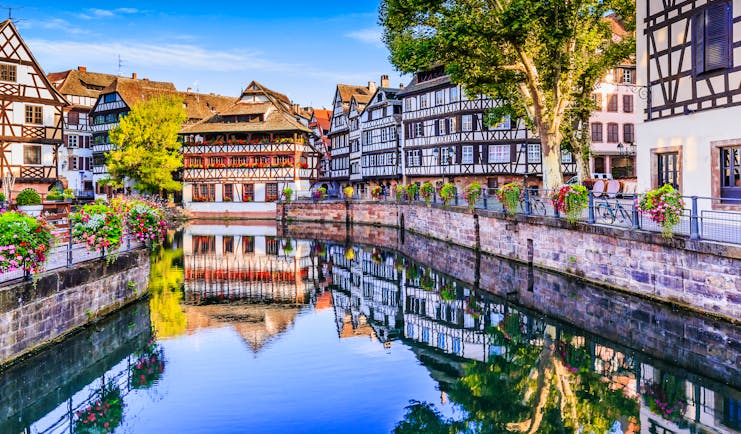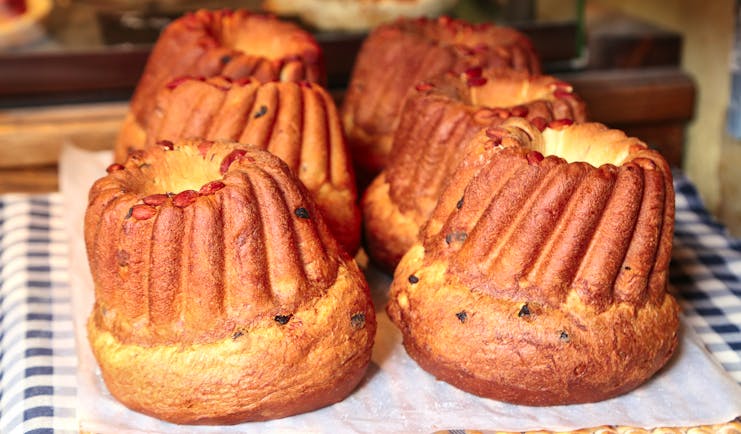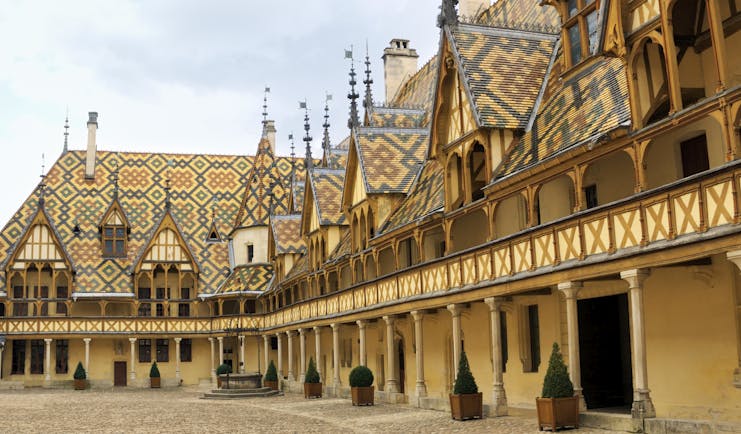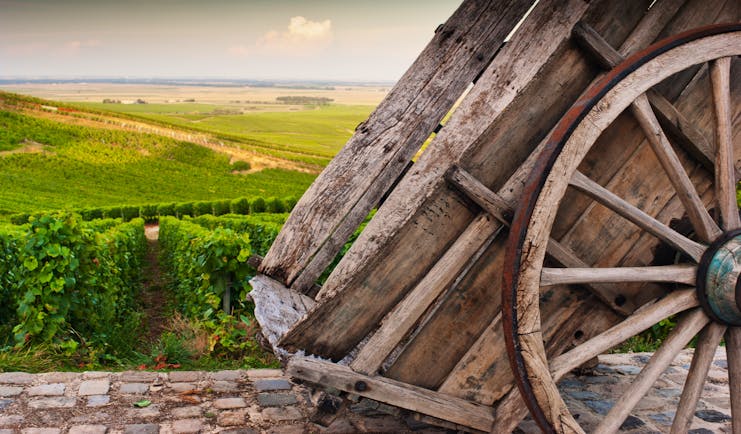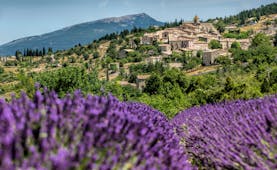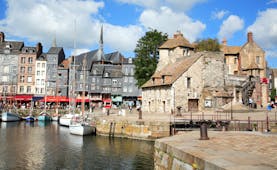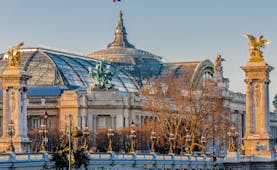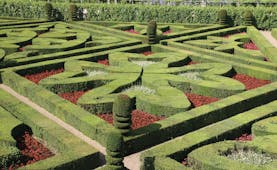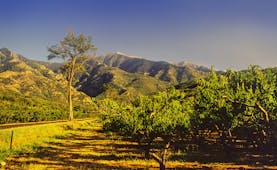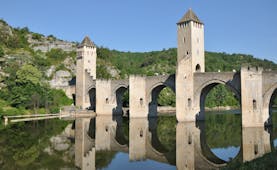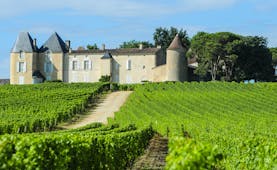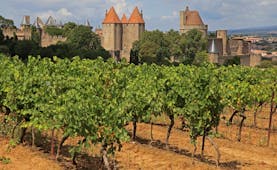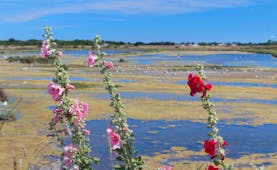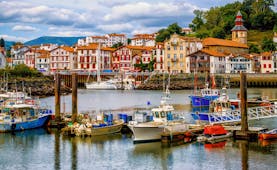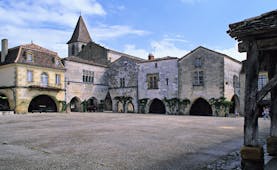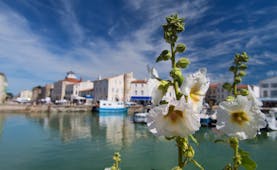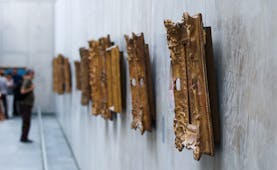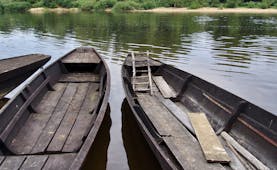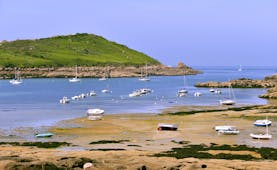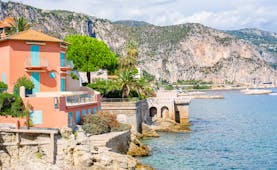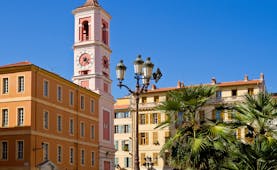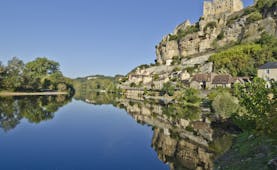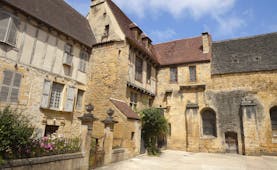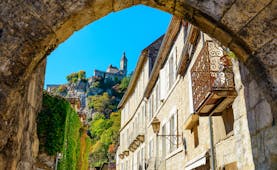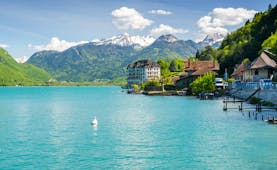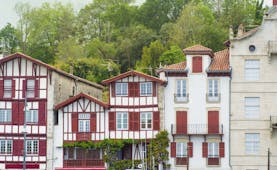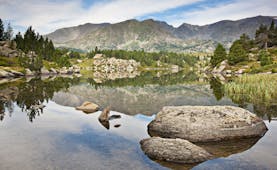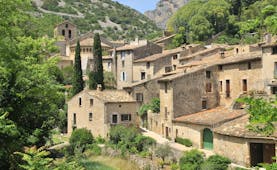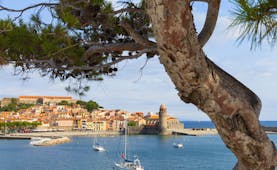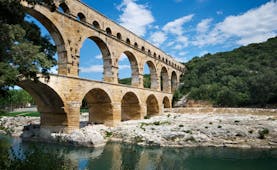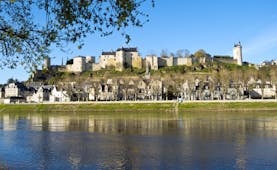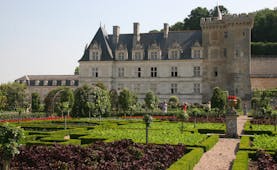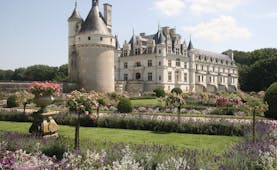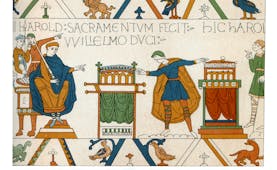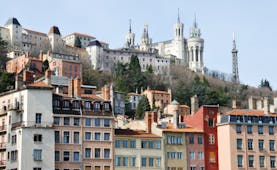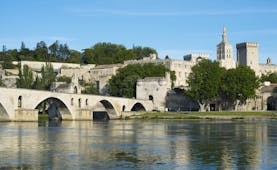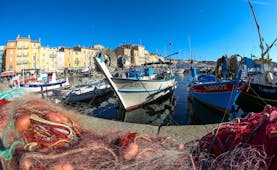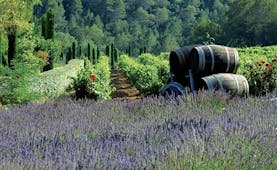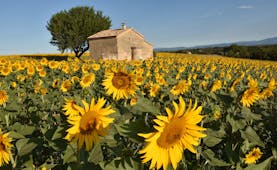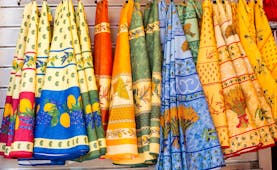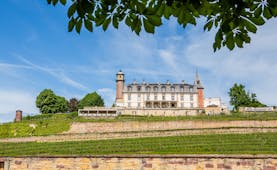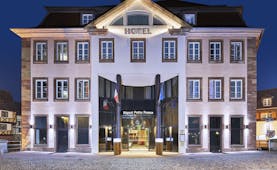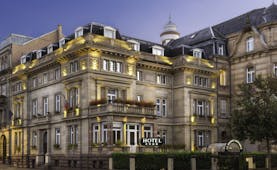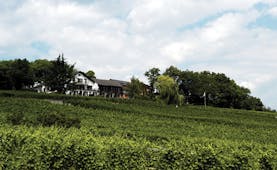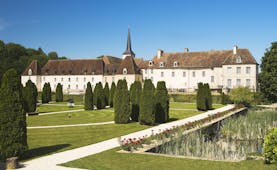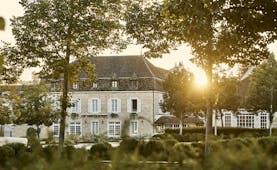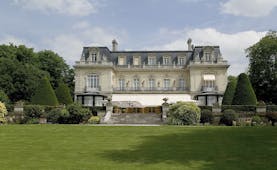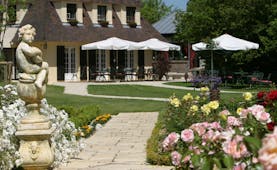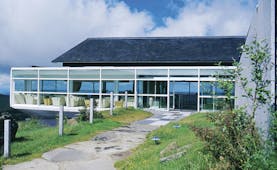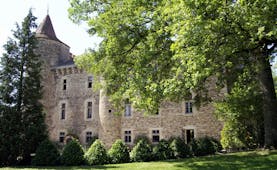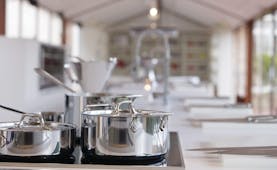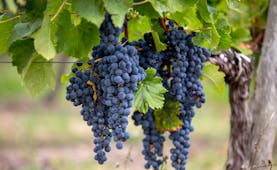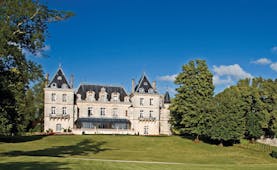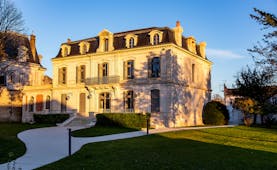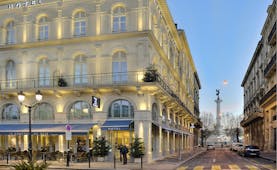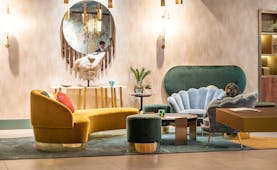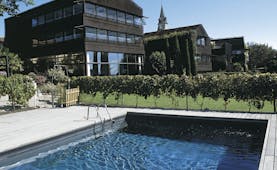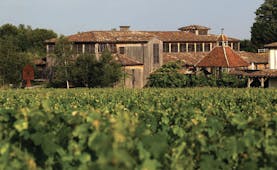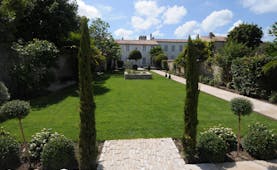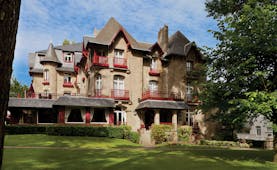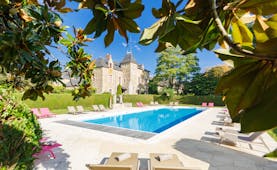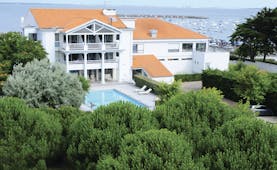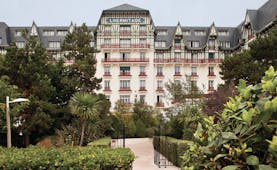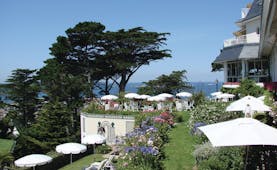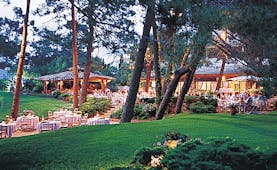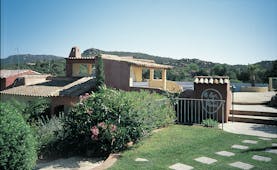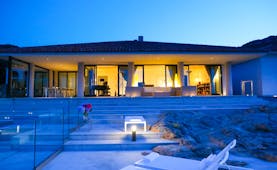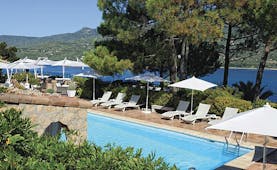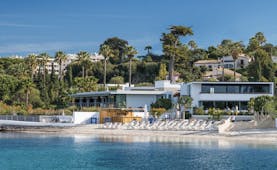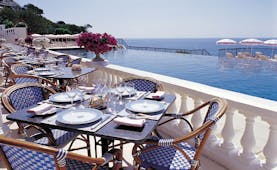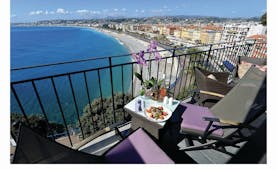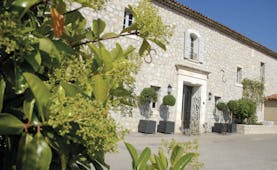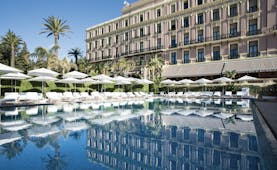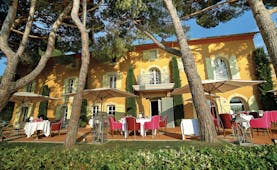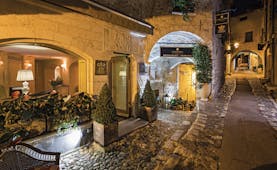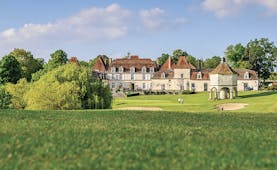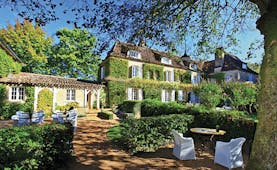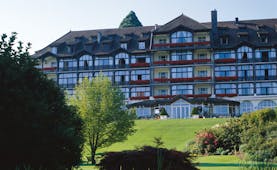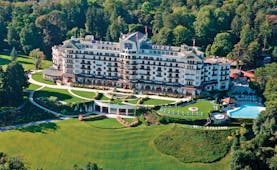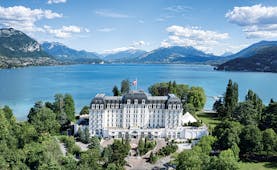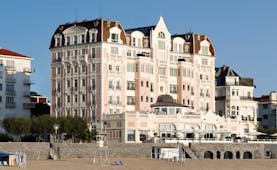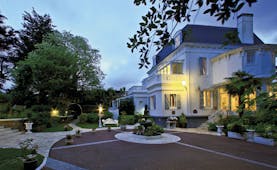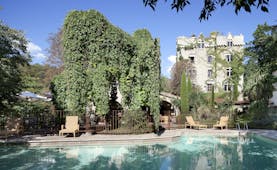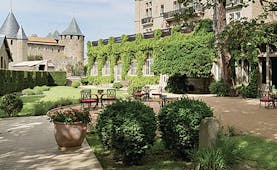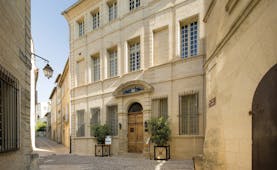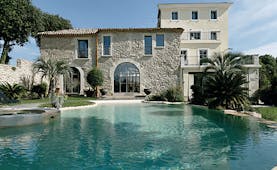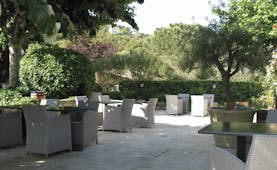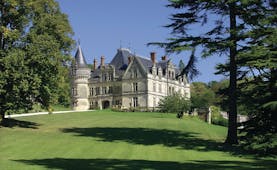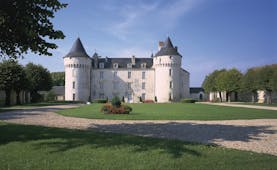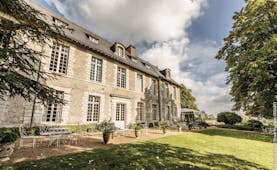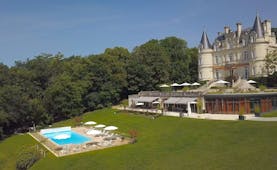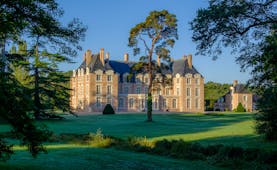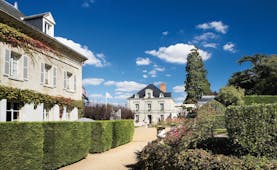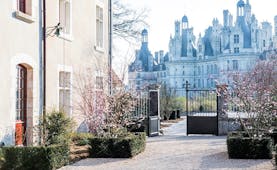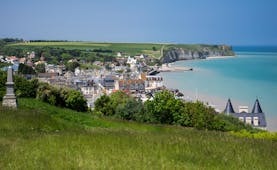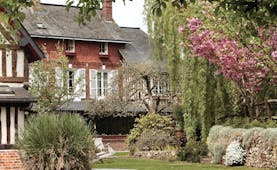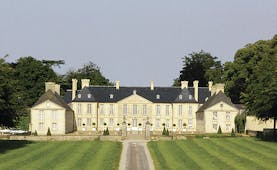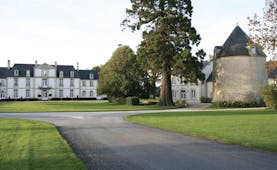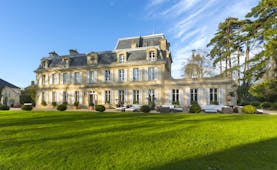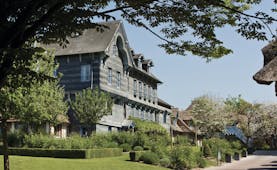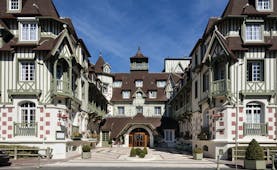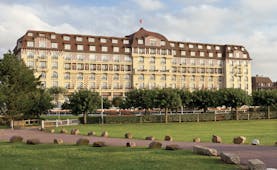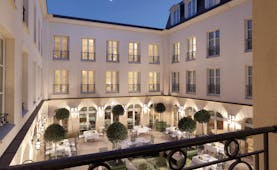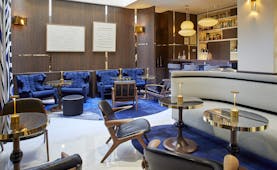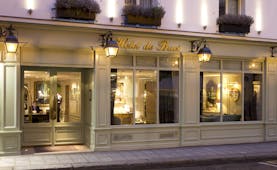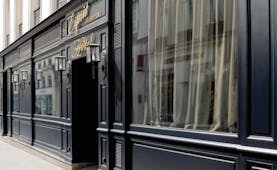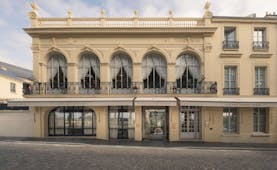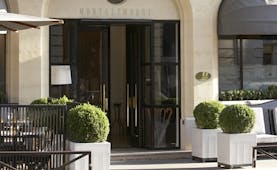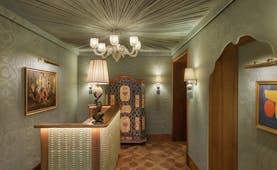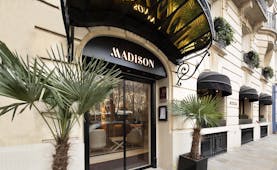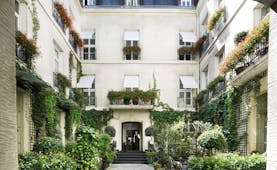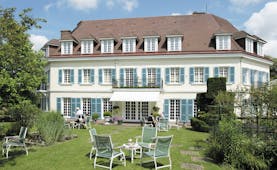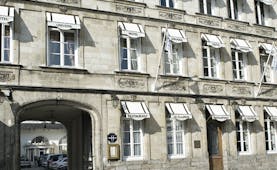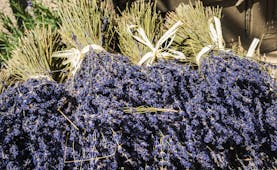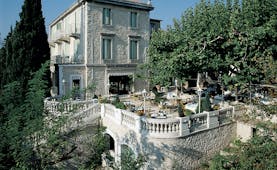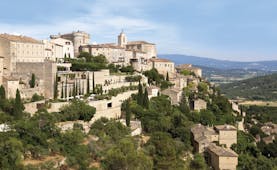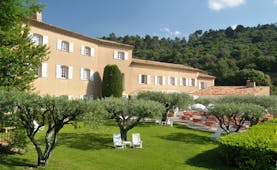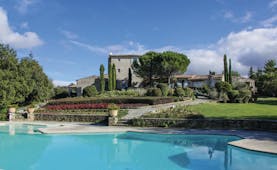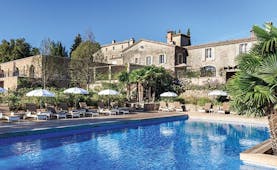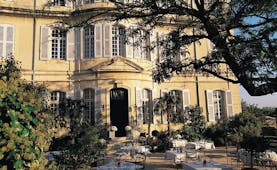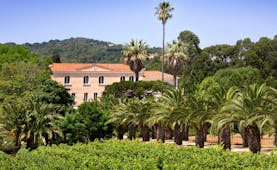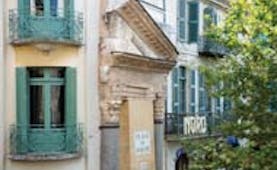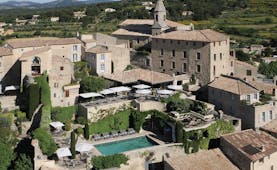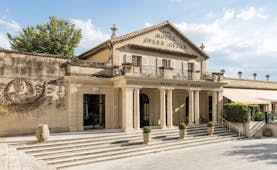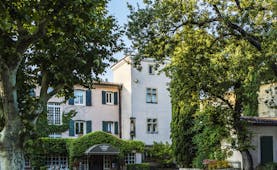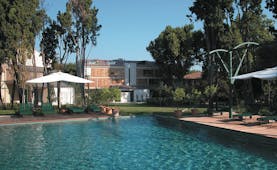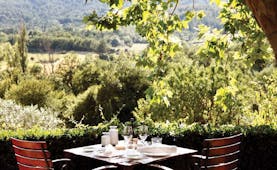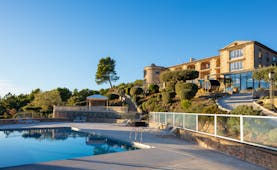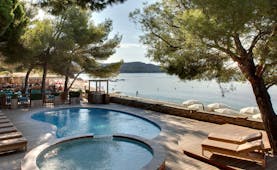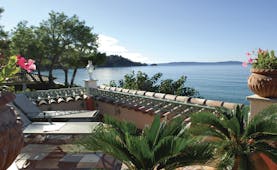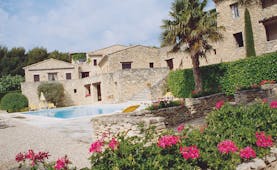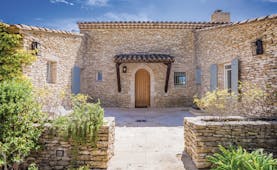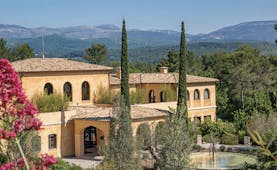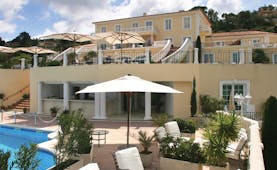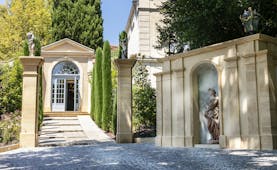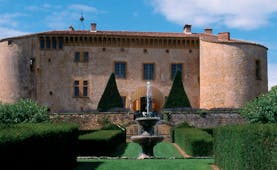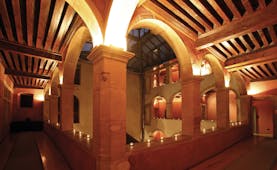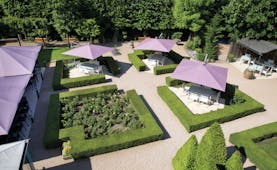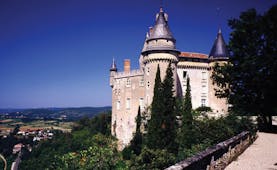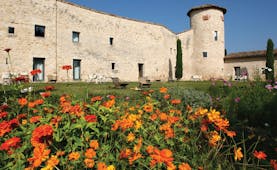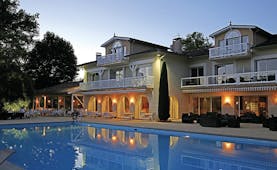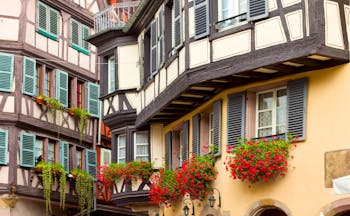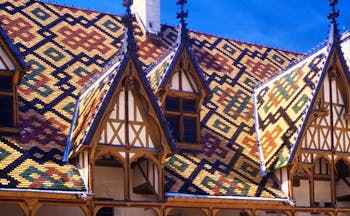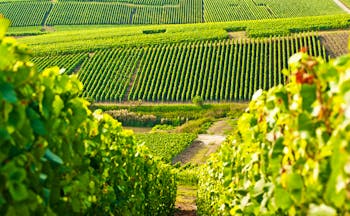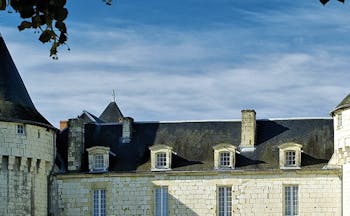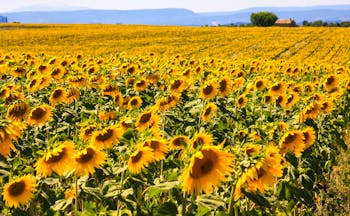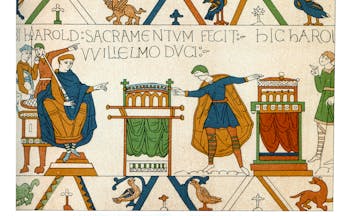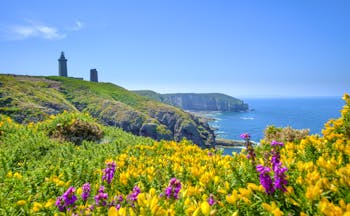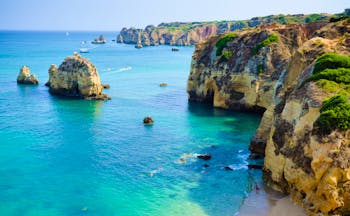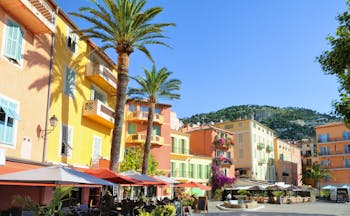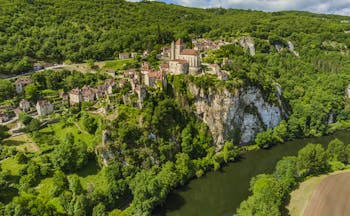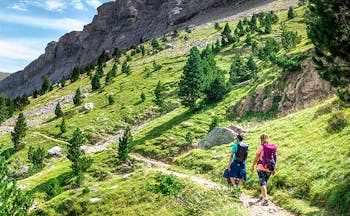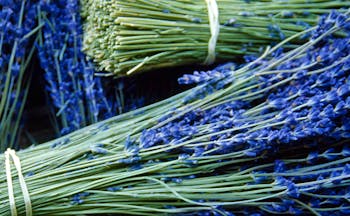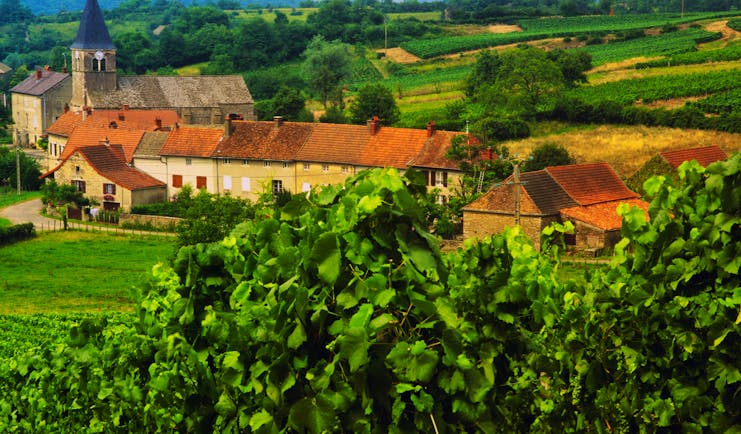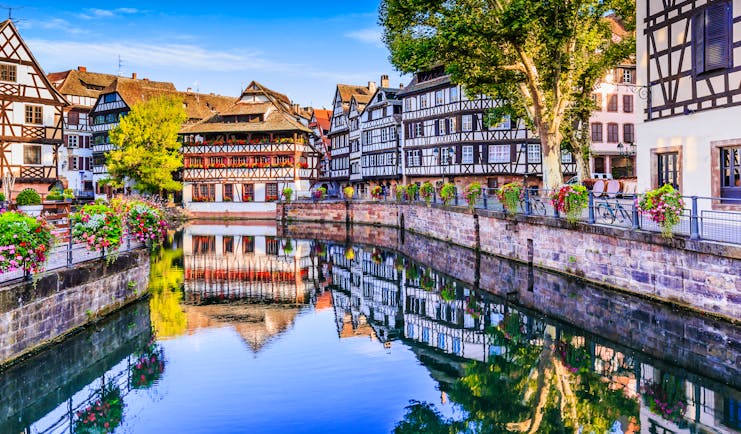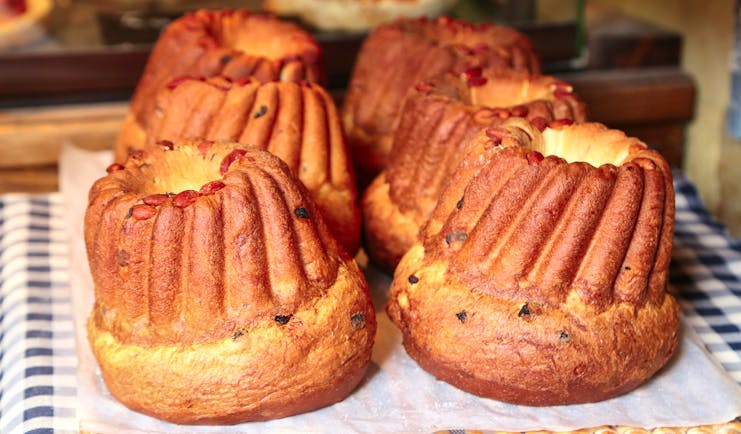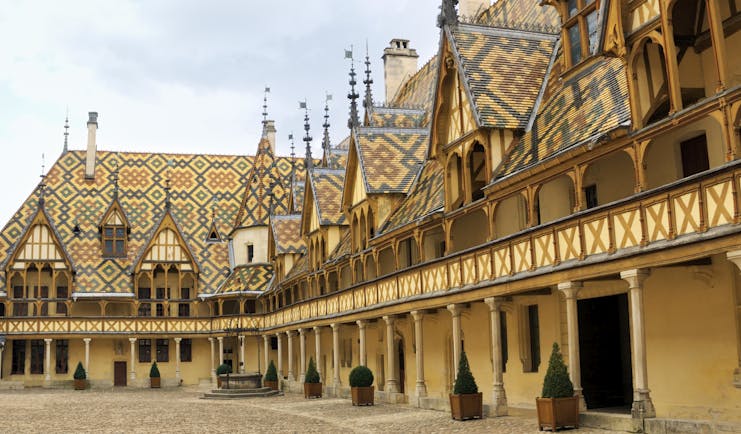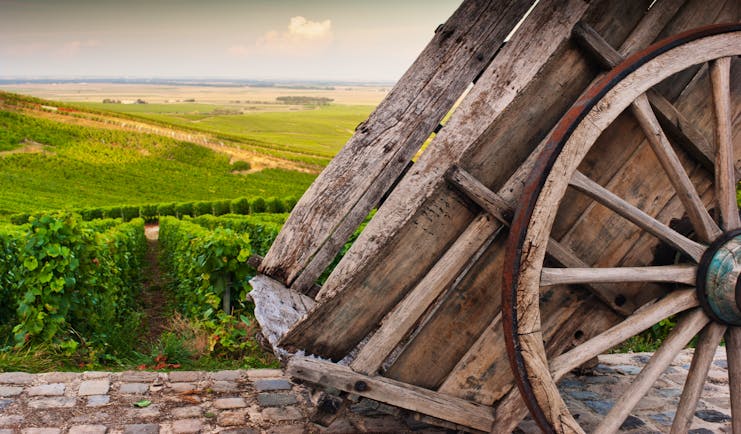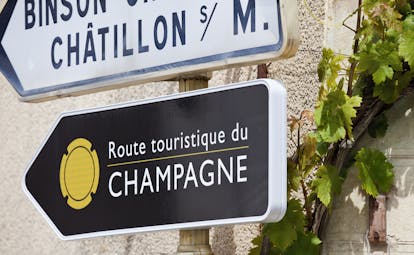Luxury self-drive holiday to the vineyard regions of eastern France staying in Champagne, Alsace and Burgundy
This 7-night self-drive, luxury, touring holiday takes you to three distinct wine-producing regions in eastern France: Champagne, Alsace and Burgundy. Start your holiday with a Eurotunnel crossing from Folkestone to Calais followed by a 3-hour drive to your first stop on this touring itinerary, Épernay in the Champagne region. Épernay is home to many champagne houses which you can visit including the Moët et Chandon cellar and a champagne museum. The nearby city of Reims is famous for its Gothic cathedral as well as for housing many champagne cellars to visit. After two nights here, you will then drive further east to Strasbourg, the capital of the Alsace region. Strasbourg is a vibrant city on the banks of the river Rhine. Spend time exploring the cobbled streets of the old quarter and take in the impressive gothic cathedral of Notre Dame. We recommend exploring the wine route of Alsace which stretches from Marlenheim to Thann. There are many pretty villages along the way to stop off at including Riquewihr, Ribeauvillé and Obernai. The final stop on this multi-centre tour is the village of Gilly-lés-Cîteaux, equidistant between the towns of Dijon and Beaune in Burgundy. Burgundy is another region which is renowned for its wine. Scenic highlights of the region include the vineyards of Cote d’Or which stretch north and south of Beaune as well as the Morvan national park which is full of forests and lakes and ideal for walkers. At the end of your holiday, drive back to Calais where you will board a Eurotunnel service to Folkestone.
Highlights
Épernay • Visit Reims • Strasbourg • Wine route of Alsace • Visit Beaune • Cote d’Or vineyards • Cote de Beaune vineyards • Wine-tasting • Visit Dijon
Day by day
You start this self-drive touring holiday of eastern France with a crossing on the Eurotunnel for your car and passengers. The crossing takes just 35 minutes with frequent departures each hour. What you can fit in today once you arrive will depend on how early you leave Folkestone. The drive from Calais to Epernay is about 3 hours. You spend two nights in the Champagne region.
You have one full day to explore the Champagne region. From your base in Épernay, you have the champagne houses on your doorstep. Further north, there is Reims, although you may want to visit here on the first day. Venture into the nearby countryside to see the Aisne and Marne Valleys, which see the vineyards thrive, before viewing and tasting the produce of this landscape in one of the hundreds of underground chalky wine cellars in either Épernay or Reims. These Gallo-Roman cellars notably belong to champagne firms of international repute, such as Moët et Chandon and Mercier. Champagne Tribaut, a family-run business that supplies companies such as Krug and Taittinger, opens their cellars and vineyards to guests for tours and wine-tasting sessions. This intimate, homely experience lets the visitor see an alternative side of wine-growing to large scale production. Equally, just across the Marne Valley, you can find the vineyards that produce Pinot Noir, or head southwards through the Côte des Blancs to taste the local mineral-packed Chardonnay. Aside from vineyards and galleries, Reims offers a wealth of impressive architecture and culture, from the Gothic Cathedral Notre-Dame with its wine-grower carvings, and the Palais du Tau, to the floral delights of Nanteuil-la-Forêt.
Today you will leave Épernay and drive east to Strasbourg, the capital of the Alsace region. The drive will take approximately 3 hours 30 minutes. The most direct route takes you through the department of the Meuse and near to the city of Verdun, scene of the longest battle of the First World War in 1916. You skirt the Parc Naturel Regional de Lorraine and continue into Alsace with your route taking you along the southern edge of the Parc Natural Regional des Vosges du Nord. The forested hills give way to a rolling landscape and south of here are the fertile fields of hops and orchards, for which Alsace is renowned.
You have two full days in Strasbourg to explore the city and surrounding region. Strasbourg is a bustling city on the river Rhine. Explore the gothic cathedral of Notre Dame and wander the cobbled streets lined with shops and cafés. The old quarter, known as la Petite France, is worth visiting with half-timbered buildings, typical of the Alsace region. Museums to visit include the Museum of Alsace and the Museum of Fine Arts. You may want to spend one of your days exploring the wine route of Alsace. The wine road stretches along the bottom of the Vosges mountains from Marlenheim to Thann. There are many pretty villages along the where you can stop to sample or purchase products as well as many walks in the vineyards. Places of interest include of Riquewihr, Ribeauvillé and Obernai.
Today you drive from Strasbourg to Burgundy, your last region visited on this tour. You may wish to stop on the way in Colmar or Mulhouse if you haven’t already visited these towns. These towns are noted for their fine half-timbered, regional architecture and museums depicting local life and traditions. You reach your hotel in Gilly-les-Citeaux, equidistant between Dijon and Beaune.
From your base in Gilly-les-Citeaux, you are in the heart of the famous Cote de Nuits wine district and a region that is home to many Premier Cru and Grand Cru vineyards. The Burgundy region is best known for its Pinot Noir red wines, and Chardonnay white wines; however, Gilly-les-Cîteaux is perfectly suited for an exploration of all the wines Burgundy has to offer. In the immediate vicinity there are the wine villages of Gevrey-Cambertin, Morey-Saint Denis, Vougeot, Vosne-Romanee and Nuits-Saint-Georges. Visit the Christian Clerget estate, which has vineyards the area and the Château de Clos, which has four huge 12th Century winepresses, and taste the wine produced there. Venture further out to visit the famous Chablis or take a tour of the white wine vineyards and cellars on the hillside village of Montagny-lés-Buxy. Once the residence of the Dukes of Burgundy, Beaune is a pretty town that maintains its medieval city walls and at the centre of the wine trade of Burgundy. here is a wine museum and wine cellars to visit as well as the strikingly attractive Hospices de Beaune with its flamboyant Gothic architecture. In Dijon, visit the Baroque palace of the Dukes, the fine art museum containing the tomb of Philip the Bold and the Gothic church of Notre Dame.
Leave the hotel after breakfast and drive back to Calais for your return Eurotunnel crossing.
I enjoyed every minute of the tour. Cindy-Marie was simply fantastic and her knowledge, kindness and humour was all that I could have asked for. This was a first class experience. Thank you for making it all happen.Customer on Tuscan wine tour, June 2022
Holiday price guide Prices from £1,130 per person based on two people sharing a double or twin room including the Eurotunnel crossing from Folkestone to Calais.
Holiday Code FRSD21
Call us on 01392 441245
Luxury self-drive holiday to the vineyard regions of eastern France staying in Champagne, Alsace and Burgundy
You start this self-drive touring holiday of eastern France with a crossing on the Eurotunnel for your car and passengers. The crossing takes just 35 minutes with frequent departures each hour. What you can fit in today once you arrive will depend on how early you leave Folkestone. The drive from Calais to Epernay is about 3 hours. You spend two nights in the Champagne region.
You have one full day to explore the Champagne region. From your base in Épernay, you have the champagne houses on your doorstep. Further north, there is Reims, although you may want to visit here on the first day. Venture into the nearby countryside to see the Aisne and Marne Valleys, which see the vineyards thrive, before viewing and tasting the produce of this landscape in one of the hundreds of underground chalky wine cellars in either Épernay or Reims. These Gallo-Roman cellars notably belong to champagne firms of international repute, such as Moët et Chandon and Mercier. Champagne Tribaut, a family-run business that supplies companies such as Krug and Taittinger, opens their cellars and vineyards to guests for tours and wine-tasting sessions. This intimate, homely experience lets the visitor see an alternative side of wine-growing to large scale production. Equally, just across the Marne Valley, you can find the vineyards that produce Pinot Noir, or head southwards through the Côte des Blancs to taste the local mineral-packed Chardonnay. Aside from vineyards and galleries, Reims offers a wealth of impressive architecture and culture, from the Gothic Cathedral Notre-Dame with its wine-grower carvings, and the Palais du Tau, to the floral delights of Nanteuil-la-Forêt.
Today you will leave Épernay and drive east to Strasbourg, the capital of the Alsace region. The drive will take approximately 3 hours 30 minutes. The most direct route takes you through the department of the Meuse and near to the city of Verdun, scene of the longest battle of the First World War in 1916. You skirt the Parc Naturel Regional de Lorraine and continue into Alsace with your route taking you along the southern edge of the Parc Natural Regional des Vosges du Nord. The forested hills give way to a rolling landscape and south of here are the fertile fields of hops and orchards, for which Alsace is renowned.
You have two full days in Strasbourg to explore the city and surrounding region. Strasbourg is a bustling city on the river Rhine. Explore the gothic cathedral of Notre Dame and wander the cobbled streets lined with shops and cafés. The old quarter, known as la Petite France, is worth visiting with half-timbered buildings, typical of the Alsace region. Museums to visit include the Museum of Alsace and the Museum of Fine Arts. You may want to spend one of your days exploring the wine route of Alsace. The wine road stretches along the bottom of the Vosges mountains from Marlenheim to Thann. There are many pretty villages along the where you can stop to sample or purchase products as well as many walks in the vineyards. Places of interest include of Riquewihr, Ribeauvillé and Obernai.
Today you drive from Strasbourg to Burgundy, your last region visited on this tour. You may wish to stop on the way in Colmar or Mulhouse if you haven’t already visited these towns. These towns are noted for their fine half-timbered, regional architecture and museums depicting local life and traditions. You reach your hotel in Gilly-les-Citeaux, equidistant between Dijon and Beaune.
From your base in Gilly-les-Citeaux, you are in the heart of the famous Cote de Nuits wine district and a region that is home to many Premier Cru and Grand Cru vineyards. The Burgundy region is best known for its Pinot Noir red wines, and Chardonnay white wines; however, Gilly-les-Cîteaux is perfectly suited for an exploration of all the wines Burgundy has to offer. In the immediate vicinity there are the wine villages of Gevrey-Cambertin, Morey-Saint Denis, Vougeot, Vosne-Romanee and Nuits-Saint-Georges. Visit the Christian Clerget estate, which has vineyards the area and the Château de Clos, which has four huge 12th Century winepresses, and taste the wine produced there. Venture further out to visit the famous Chablis or take a tour of the white wine vineyards and cellars on the hillside village of Montagny-lés-Buxy. Once the residence of the Dukes of Burgundy, Beaune is a pretty town that maintains its medieval city walls and at the centre of the wine trade of Burgundy. here is a wine museum and wine cellars to visit as well as the strikingly attractive Hospices de Beaune with its flamboyant Gothic architecture. In Dijon, visit the Baroque palace of the Dukes, the fine art museum containing the tomb of Philip the Bold and the Gothic church of Notre Dame.
Leave the hotel after breakfast and drive back to Calais for your return Eurotunnel crossing.
I enjoyed every minute of the tour. Cindy-Marie was simply fantastic and her knowledge, kindness and humour was all that I could have asked for. This was a first class experience. Thank you for making it all happen.Customer on Tuscan wine tour, June 2022
Holiday price guide Prices from £1,130 per person based on two people sharing a double or twin room including the Eurotunnel crossing from Folkestone to Calais.
Holiday Code FRSD21
Our prices include
● Eurotunnel from Folkestone to Calais return for car and passengers
● 2 nights’ bed and breakfast in a classic room at Hostellerie la Briqueterie, Épernay
● 3 nights’ bed and breakfast in a superior room at Hotel Regent Contades, Strasbourg
● 2 nights’ bed and breakfast in a tradition room at Château de Gilly in Gilly-lés-Cîteaux
● Concierge service and Expressions Holidays regional helpful hints
Our prices do not include
● Early check-in or late check-out at any hotels (although we can arrange this on request at additional cost)
● Any other services not mentioned above, such as additional transfers, entrance fees and meals except breakfast at hotels
● Personal holiday insurance. This is essential and cover should be in place from when you book the holiday.
● Local tourist tax, usually between Euros 1 and 3 per person per night, and payable locally to the hotel
Additional information
This holiday can be arranged throughout the year subject to the opening dates of the hotels. Additional nights can be added at any point on this itinerary.
Travel times for this holiday
Calais to Épernay: 3 hours by car
Épernay to Strasbourg: 3 hour 30 minutes by car
Strasbourg to Gilly-lés-Cîteaux: 3 hours 30 minutes by car
Gilly-lés-Cîteaux to Calais: 5 hours 20 minutes by car
Call us on 01392 441245
Luxury self-drive holiday to the vineyard regions of eastern France staying in Champagne, Alsace and Burgundy
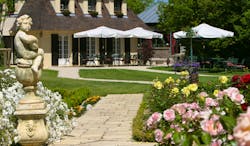
Hostellerie La Briqueterie is a 5-star boutique hotel, perfectly situated for exploring the wineries of the Champagne region, including some of the most prestigious champagne houses. Delicious cuisine and excellent spa facilities afford guests a truly tranquil experience.
Classic room
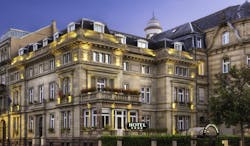
This is a 4-star hotel with 48 rooms and suites, occupying a splendid neoclassical residence of pink Vosges sandstone. Very cosy and elegant. Easy access to the city.
Superior room
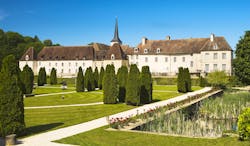
Château de Gilly is a 5-star hotel a former Benedictine Priory in the heart of the Burgundy wine region. The hotel retains many of its original features and serves excellent cuisine for a luxurious experience.
Tradition room
I enjoyed every minute of the tour. Cindy-Marie was simply fantastic and her knowledge, kindness and humour was all that I could have asked for. This was a first class experience. Thank you for making it all happen.Customer on Tuscan wine tour, June 2022
Holiday price guide Prices from £1,130 per person based on two people sharing a double or twin room including the Eurotunnel crossing from Folkestone to Calais.
Holiday Code FRSD21
Call us on 01392 441245
Luxury self-drive holiday to the vineyard regions of eastern France staying in Champagne, Alsace and Burgundy
About Alsace
An Expressions tailor-made holiday to Alsace enables you to visit both the northern Vosges and the cultivated quaintness of the Alsatian Wine Road during your holiday in the region. With its combination of stunning natural scenery in the wooded hills and valleys of the Vosges mountains, with ruins of mediaeval fortresses and fortified villages, with gently sloping vineyards facing the Rhine valley and with fairy-tale like towns of pretty half-timbered houses and cobbled streets, Alsace is a region well worth visiting. Standing at the crossroads of Europe, Alsace encapsulates an unmistakeably European flavour where historic and cultural influences of its French and German neighbours have created a unique atmosphere with an independent character and great traditions.
Highlights of Alsace
Sample Choucroute and Gugelhupf, Wine and Beer, the Cherry festivals in May, the festival of Son et Lumiere at Strasbourg cathedral in the summer, the Wine festivals in the autumn, and the Christmas markets towards the end of the year.
Climate in Alsace
Average air temperatures in Centigrade: Jan: 5.5, Feb: 5.3, Mar: 9.3, Apr: 13.7, May: 15.8, Jun: 23.0, Jul: 24.1, Aug: 26.3, Sep: 21.2, Oct: 14.9, Nov: 7.6, Dec: 4.7. Source: Direction de la Meteorologique de France.
Call us on 01392 441245
Luxury self-drive holiday to the vineyard regions of eastern France staying in Champagne, Alsace and Burgundy
About Burgundy
An Expressions tailor-made holiday to Burgundy is an opportunity to explore an area which is famous throughout France as being a region rich in wine and gastronomy as well as in history and art. The best-known area of Burgundy is that of the Cote d`Or and the Cote de Beaune located close to Beaune with its villages whose names are those of some of the most famous wines; Gevrey Chambertin, Nuits St Georges, Pommard, Meursault and Montrachet. Beaune itself, deserves a visit with its enchanting 15th Century Hotel Dieu and wine museum. While on holiday in Burgundy you will find that almost everywhere there are offers of wine tastings and direct sales. This area of eastern France is all too often visited just en route from the north to the south, but we would urge you to linger a little longer and enjoy a longer holiday in Burgundy to explore the region in detail. A self-drive touring holiday is an excellent way to explore Burgundy, offering the chance to discover the vineyards of northern France; to combine a stay here with one in Beaujolais; to travel further south en route to Provence; or to enjoy a tour around the whole of France.
Highlights of Burgundy
Cultural highlights include Burgundy wines and marcs, local wine festivals, the Beaujolais vineyards, and the Romanesque architecture.
Climate of Burgundy
Average air temperatures in centigrade: Jan: 6.1, Feb: 5.9, Mar: 10.3, Apr: 15.3, May: 15.8, Jun: 23.8, Jul: 25.8, Aug: 26.1, Sep: 21.2, Oct: 15.5, Nov: 9.1, Dec: 6.2. Source: Direction de la Meteorologique de France.
Call us on 01392 441245
Luxury self-drive holiday to the vineyard regions of eastern France staying in Champagne, Alsace and Burgundy
About Champagne
An Expressions tailor-made holiday to Champagne offers the chance to explore one of the great historic provinces of France. Known in the 9th century under Charlemagne for its agricultural riches, it became famous for its produce and celebrated fairs. Today, though known of course for its eponymous sparkling wine, and despite lying en route from the UK to the south of France, Champagne is one of the least visited regions in France, an under sung gem waiting to be explored. Naturally, bubbly looms large on the list of attractions for visitors to the region, with Epernay, a lovely town on the chalky hills southwest of Reims, the undisputed champagne capital of the world. Here, you can enjoy tastings at the home of several champagne producers, including Moet & Chandon and Perrier-Jouet. Smaller producers can also be visited between the pretty towns of Bar sur Aube and Les Riceys. Champagne can also be tasted at the celebrated Taittinger cellars in Reims, the largest town in the Champagne. A bustling university city, Reims has all the feel of a busy regional capital, with a fabulous old town and magnificent 13th century cathedral, one of the greatest gothic buildings of northern France. Largely made up of undulating hills and pretty farmland, Champagne's landscape rises in the north towards the densely wooded, river-riven walker's paradise of the Ardennes, with the Plateau de Langres in the south home to the fortified Roman hill town of Langres, sometimes known as the Carcassonne of the North - without the crowds. Due to its proximity to the north coast of France, the Champagne region can easily be incorporated into a self-drive touring holiday of the Northern Vineyards or can be used as a stopover en route to the French Alps and Lakes.
Highlights of Champagne
Champagne cellar visits in Reims, Epernay and in vineyards along the Aube; the old town of Charleville Mezieres, capital of the Ardennes department; Charles de Gaulle's country residence and burial site, Colombey les Deux Eglises; Reims, with one of the finest medieval cathedrals in France, once the coronation place of French kings, now with one of the best son-et-lumieres in France; Reims' magnificent Roman triumphal arch; Lac du Der, the biggest reservoir in Europe, one of the most important migration routes for Europe's waterfowl, sheltering vast flocks of cranes, passing through in their thousands in spring and autumn; the fortified hill town of Langres, ‘Carcassonne of the North’ - minus the crowds; la foret d'Orient near Troyes and Montagne de Reims, both Regional Natural Parks; river trips along the Seine, the Marne, and the Aube; the 13th century gothic cathedral of Troyes, with its spectacular stained glass windows; autumn wine festivals.
Travel around the Champagne region
The Champagne region is reached very easily from the UK by air and rail. With the most extensive rail network in Western Europe, France is a great country to explore by train. The nationally owned SNCF (Societe Nationale des Chemins de Fer) runs fast, efficient services between the main towns. Buses cover the rural areas, but services can be rather sporadic, with departures often at awkward times. To visit Champagne's cellars - the main reason for being here - by far the best option is to rent a car.

